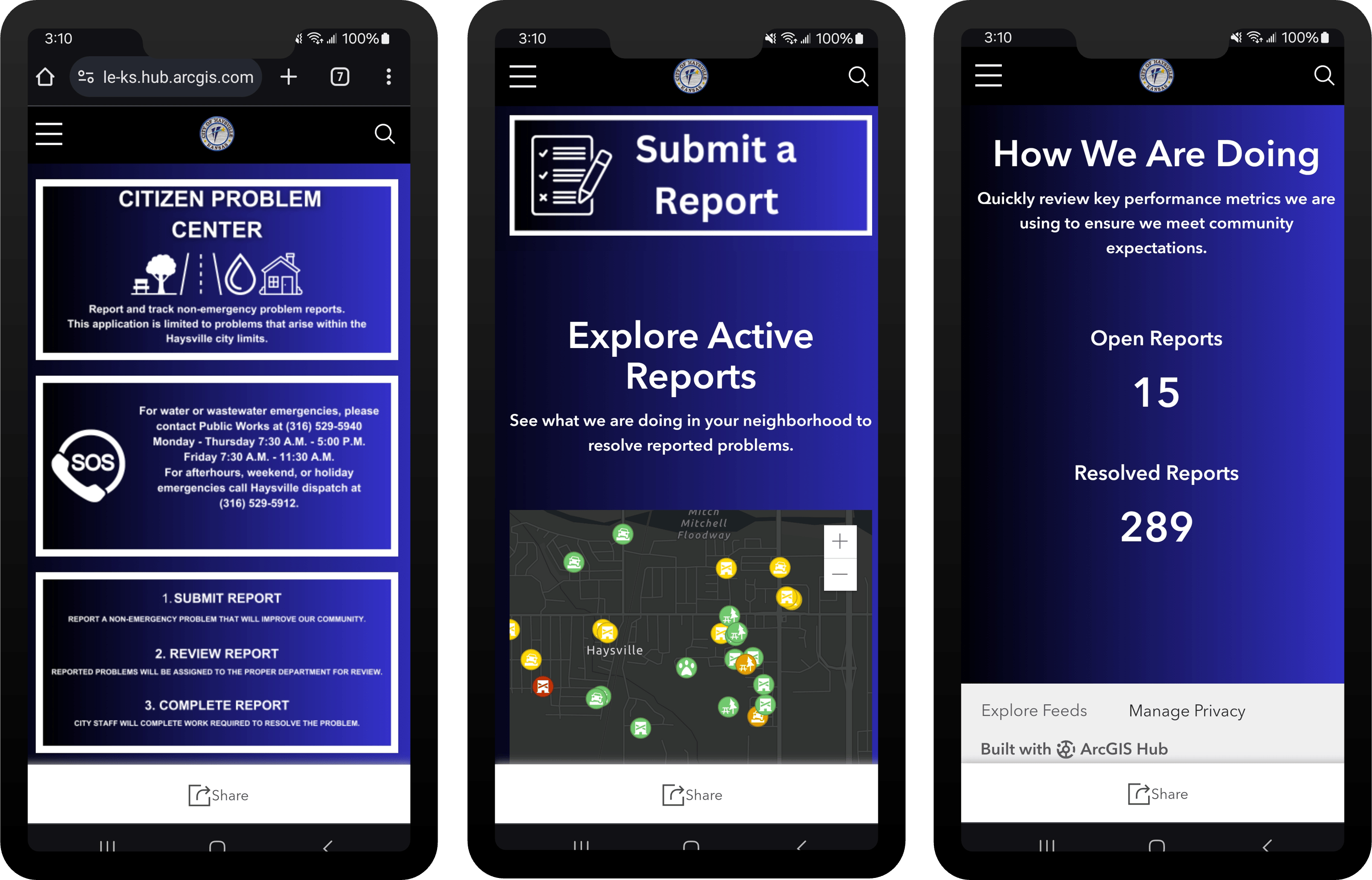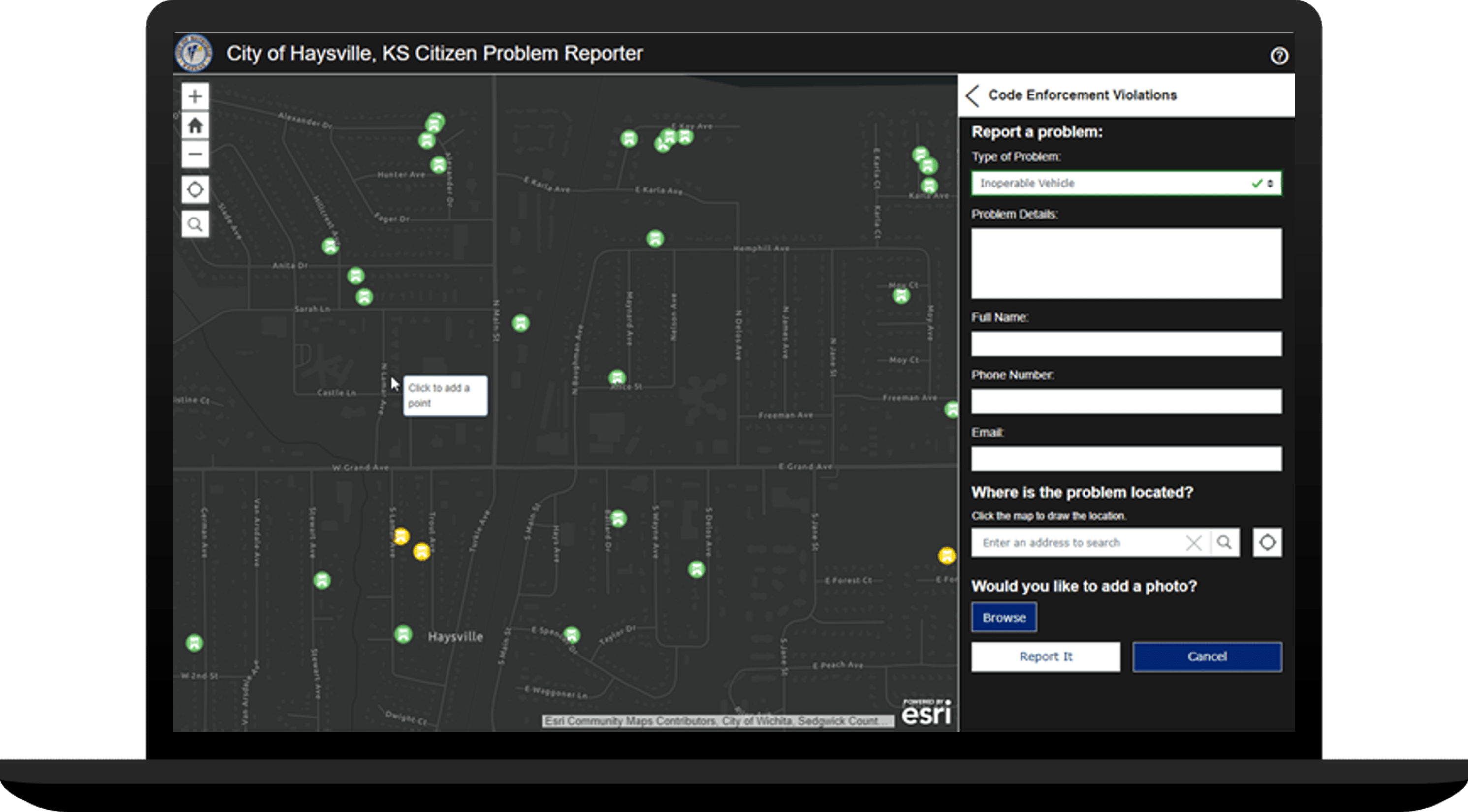ArcGIS Solutions helps you make the most of your GIS by providing purpose-driven, industry-specific configurations of ArcGIS.
Car blocking your mailbox? Trash bins overflowing in a nearby park? Neighbor’s rooster keeping you up at night? Problems like these may not be urgent, but they are important to those they affect. And they occur in every community, from small rural towns to large urban centers.
The issue is not that problems like these exist but how local governments work with their communities to resolve them. Sure, citizens want their requests addressed (and promptly), but they also want to be heard and maybe even be a part of the resolution. Above all, a citizen’s overall experience can affect how they view their city. Therefore, a smart local government encourages its citizens to report issues and makes it easier for them to track the city’s response. But how? Most cities already have their hands full and don’t have time to figure out how to improve their current approach.
Fortunately, they don’t have to. Our Citizen Problem Reporter solution includes a series of preconfigured apps that help local governments streamline how nonemergency requests are submitted and managed. Cities that deploy Citizen Problem Reporter to their ArcGIS organization soon discover that the solution is more than just a helpful tool. It’s a partner.
The problem with problems
The City of Haysville, Kansas, is a terrific example of how one local government has used Citizen Problem Reporter to transform the way it engages with its community.
A small suburb south of Wichita, the City of Haysville has grown in recent years and, naturally, the volume of citizen-reported issues has increased as well. At first, however, the method for reporting issues remained unchanged: Citizens would report issues by calling, sending an email, or visiting city offices in person. City staff would manually record each concern and attempt to forward it to the appropriate department for resolution. The process was slow, decentralized, and prone to delays and miscommunication. These inefficiencies strained city resources, and worse, citizens weren’t seeing prompt resolution for their concerns.
Problem solvers
It was time for the City of Haysville to modernize its approach. GIS administrator Cody M. Erwin and his team extensively researched options, looking for a platform that was user-friendly and customizable and would work with the city’s existing systems. The team found the Citizen Problem Reporter solution and, upon further review, were sold by its intuitive interface and impressive functionality.
Implementing Esri’s Citizen Problem Reporter has not only improved our efficiency but also enhanced transparency and accountability in addressing citizen concerns.
The city deployed Citizen Problem Reporter and met with remarkable results. Now, citizens can report nonemergency issues at any time, day or night, by submitting a form via the city’s Citizen Problem Center ArcGIS Hub site.

The form allows a citizen to choose a problem category and type, describe the problem, and provide the location by typing an address or simply clicking a map. There’s even an option to attach any photos that help illustrate the problem.

After the citizen submits the issue, the report is automatically logged into the city’s system, where it is then directed to the appropriate department for resolution. City staff in these departments manage issues from an internal app that centralizes operations. “Tasks that once required manual coordination and tracking can now be managed seamlessly through the platform, saving time and resources for our organization,” says Erwin. “The ability to monitor the status of reported issues in real-time has empowered us to prioritize tasks more effectively, ensuring that urgent matters are addressed promptly while also maintaining visibility into long-term projects.”
And let’s not forget about the community. While much of the management happens behind the scenes, status is public facing. Citizens can return to the Citizen Problem Center Hub site at any time to track the status of the problems they or any other citizen has reported.
Esri's Citizen Problem Reporter solution has transformed the way we engage with our community, fostering greater trust and collaboration in resolving concerns.
The city has resolved nearly 300 requests since it adopted the solution, and Erwin says that he cannot overstate the impact that Citizen Problem Reporter has had on the city’s operations. “It has redefined how we prioritize and resolve citizen-reported issues, resulting in a more proactive and efficient approach.”
Problem solved.
Learn more
For more information about the Citizen Problem Reporter solution, check out the following resources:
- Learn how to deploy, configure, and use the solution.
- View a demo video.
- Learn more about ArcGIS Solutions.


Commenting is not enabled for this article.